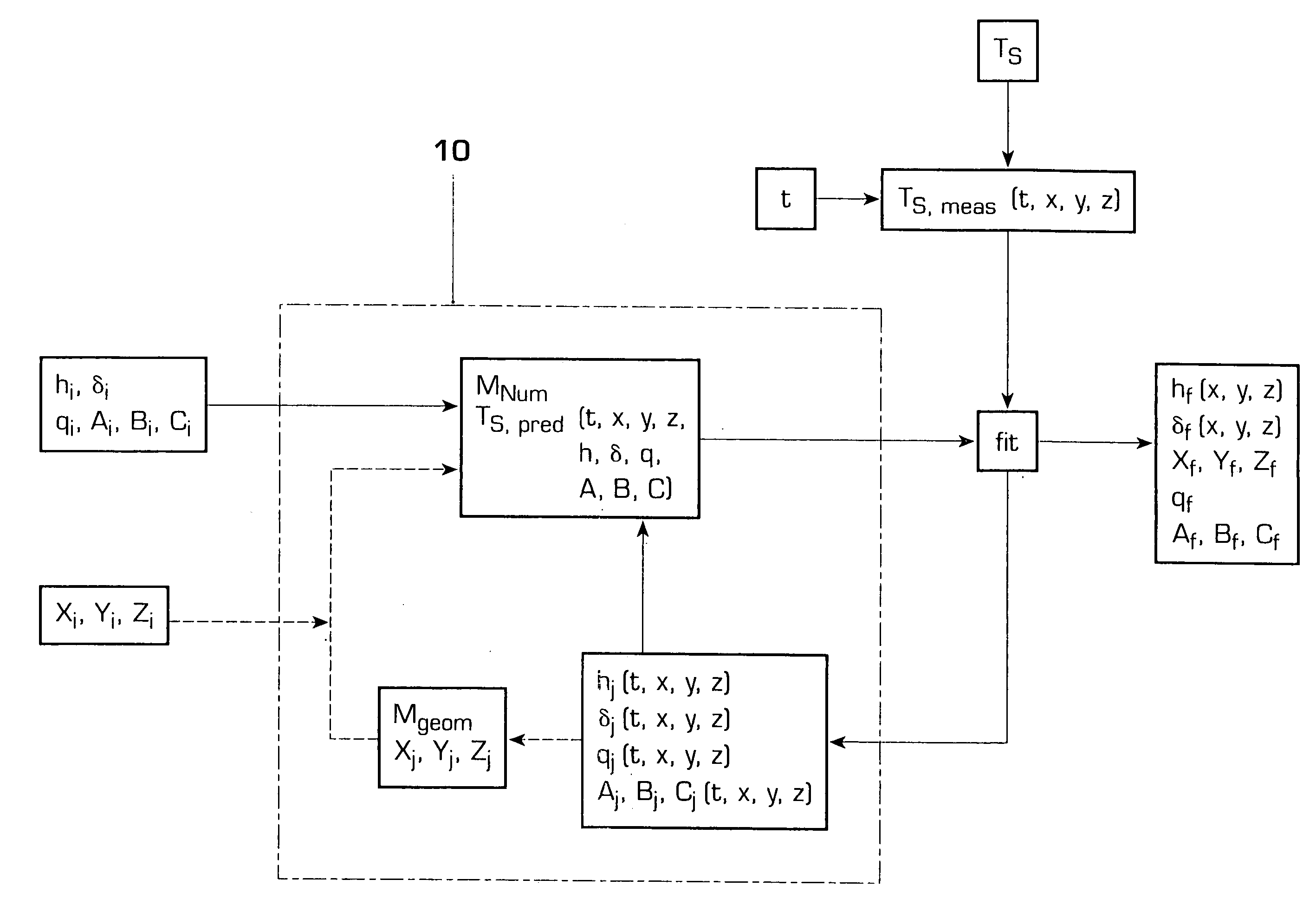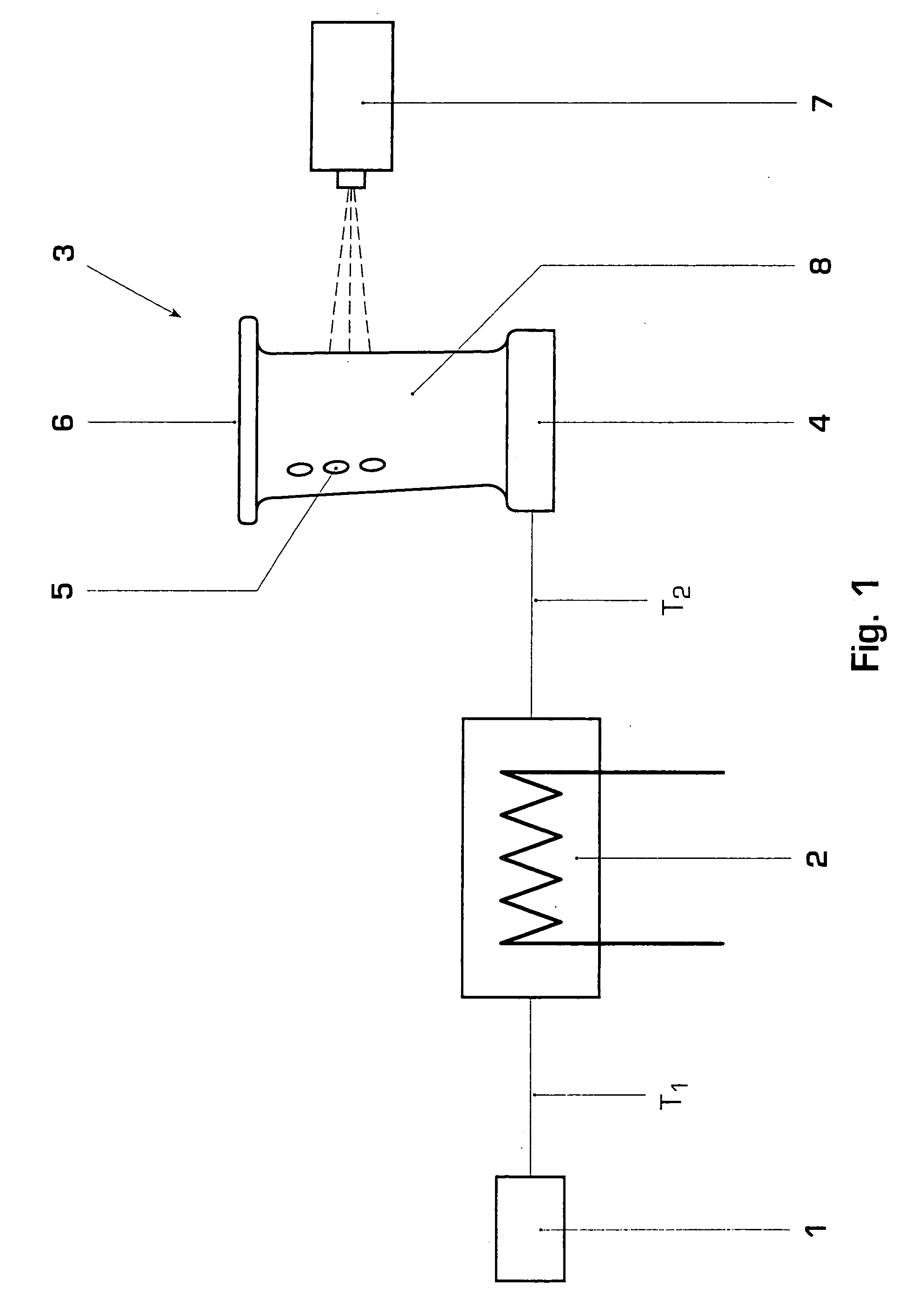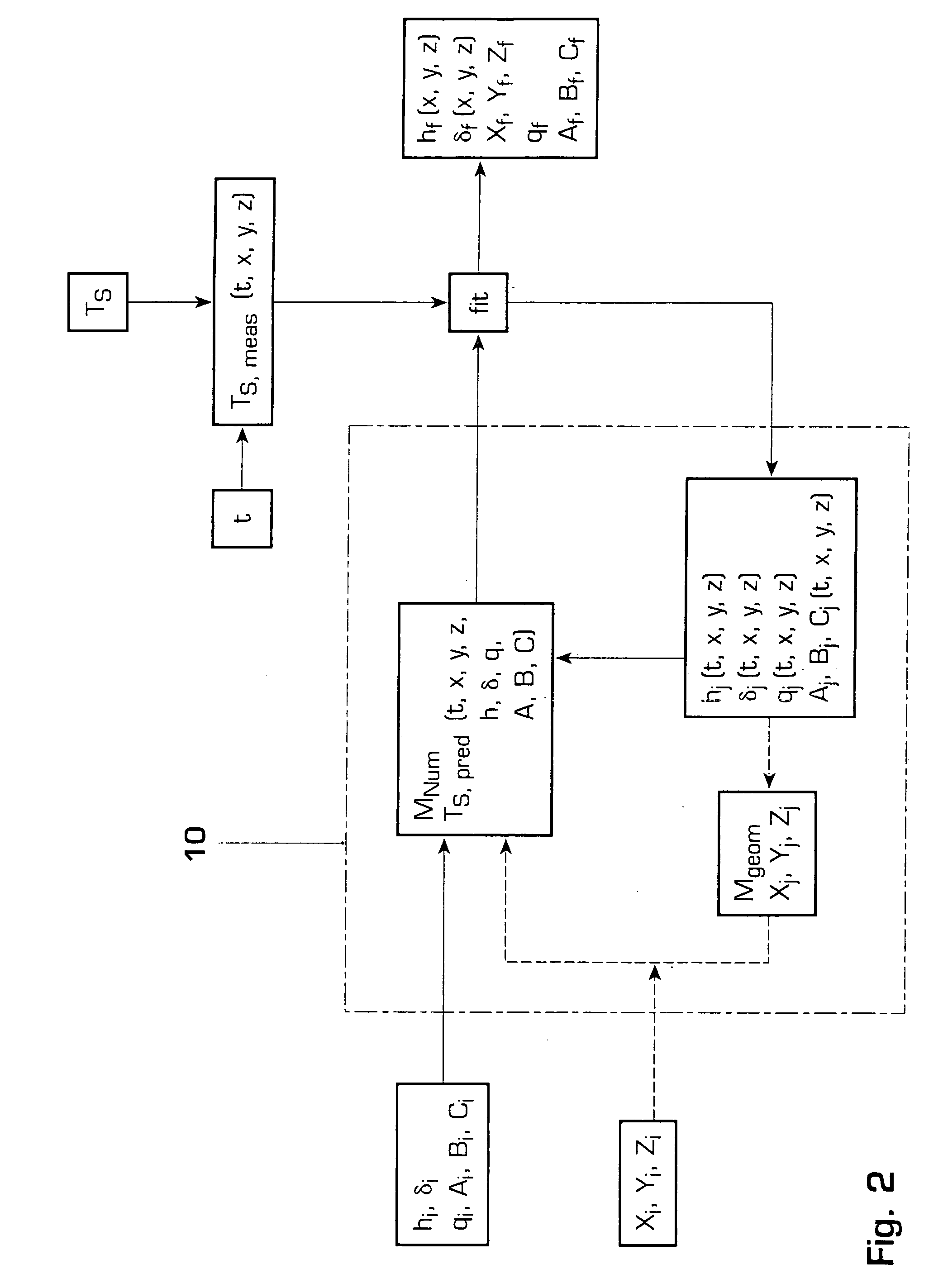Method for determine the internal structure of a heat conducting body
a technology of internal structure and heat conducting body, which is applied in the direction of heat measurement, material heat development, instruments, etc., can solve the problems that the numerical method does not include known parameters of the geometry of the internal structure or the material of the structure, and achieve the effect of accurate determination of the wall thickness
- Summary
- Abstract
- Description
- Claims
- Application Information
AI Technical Summary
Benefits of technology
Problems solved by technology
Method used
Image
Examples
Embodiment Construction
[0043]FIG. 1 shows schematically a measurement set-up including a source 1 for a flow medium, most suitably air having a first temperature T1. (depending on the type of body and circumstances of measurement other suitable flow media such as water, nitrogen, steam may also be used). The source 1 is connected by means of a line to an inlet to a heater 2. An outlet line leads from the heater to the inlet of the internal structure of a turbine blade 3 to be inspected. Air passing through the heater 2 is heated such that it has a selected and controlled temperature T2 at a point prior to entering the cooling structure of the blade 3. The air is led to the internal cooling structure of a blade 3 via channels in the root 4 of the blade. It exits from the structure through exit holes such as film cooling holes 5 or holes in the tip region 6 of the blade. An infrared camera 7 having a pixelised detecting area is focussed onto an external surface 8 of the blade 3 and detects a thermal image o...
PUM
 Login to View More
Login to View More Abstract
Description
Claims
Application Information
 Login to View More
Login to View More - R&D
- Intellectual Property
- Life Sciences
- Materials
- Tech Scout
- Unparalleled Data Quality
- Higher Quality Content
- 60% Fewer Hallucinations
Browse by: Latest US Patents, China's latest patents, Technical Efficacy Thesaurus, Application Domain, Technology Topic, Popular Technical Reports.
© 2025 PatSnap. All rights reserved.Legal|Privacy policy|Modern Slavery Act Transparency Statement|Sitemap|About US| Contact US: help@patsnap.com



